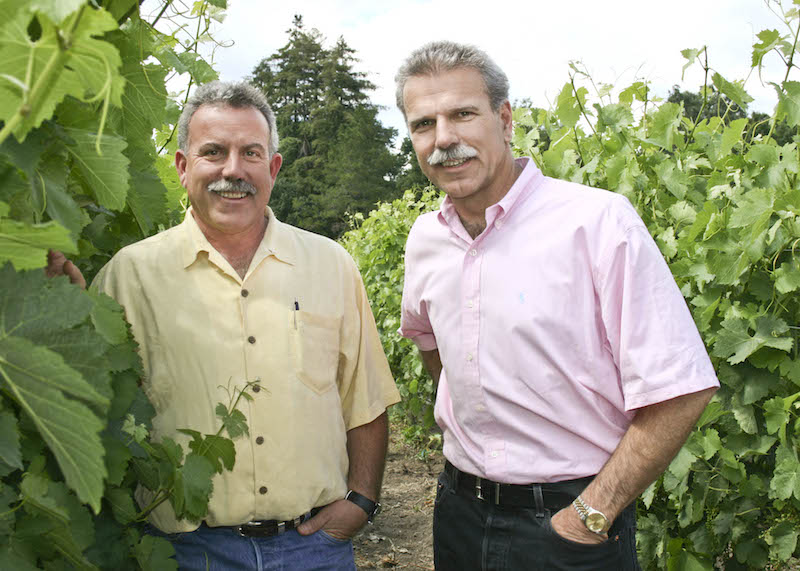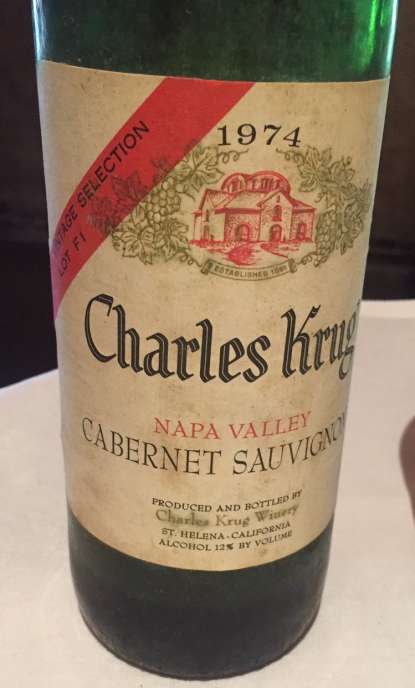Charles Krug’s Rich History Moves Winery Toward the Future
In 1861, a Prussian immigrant named Charles Krug (he’s of no relation to Krug, the famed French-Champagne house) founded Napa Valley’s very first winery. Krug, an editor of a German language newspaper, had no previous winemaking experience, but saw potential in the land nestled between the Vaca and Mayacamas mountain ranges. Krug used carefully selected rootstalks and varietals that he thought would thrive in the region to make wine in a cider press. Although he died in 1892, Krug is generally seen as an early pioneer to Napa’s wine industry. The winery was purchased by James Moffatt Sr. who leased the land to local grape-growers for the next 51 years.
Meanwhile, in 1908 a young Italian by the name of Cesare Mondavi moved with his wife, Rosa, to Minnesota. He set up a saloon, boarding house, and grape-shipping company that sent grapes to Italian immigrants who practiced home winemaking. In 1922, Mondavi moved his family of six to Lodi, California, where he built a successful grape and fruit shipping business with his two sons, Robert and Peter. In 1943, the Mondavis purchased Charles Krug Winery and brothers Robert and Peter set out to make wine. Ironically, they decided not to change the name of the winery—Charles Krug was a well-known and respected label and back then, no one had heard of the Mondavis. In 1966, after a family feud, Robert left Charles Krug to start his own winery. While Robert Mondavi trailblazed a name of his own, his little brother Peter, continued to produce noteworthy wine at Charles Krug.

Today, the Charles Krug Winery is run by Peter’s two sons, Marc and Peter Jr., who are using the past to look toward the future. Two and a half years ago, they opened a gorgeous Howard Backen-designed hospitality center, tasting room and barrel house in the building that was originally the redwood fermentation tank cellar. One redwood tank remains behind the glass wall that encloses the temperature-controlled barrel room, a reminder of Charles Krug’s rich history. The large three-story hospitality center is modern and masculine with grey lounge chairs and black tables. On one side of the room is the tasting counter and on the other side is a coffee bar and small cafe, Cucina Di Rosa. The pristine grounds are gorgeous: vibrant red roses grow alongside the rows of vines and a massive green lawn is perfect for picnicking. On weekends in the summer, Cucina Di Rosa rolls out a wood-fired pizza oven and serves up authentic and delicious pies to hungry winery-goers. Charles Krug has partnered with the Culinary Institute of America (CIA), whose Northern California campus is across the street from the winery. Three acres of Charles Krug land is devoted to a culinary garden, run by the CIA’s students, that supplies not only the school, but also the winery’s culinary staff.
A slew of exciting new projects are in the works, one of which is a glamping experience. In the near future, couples will be able to rent a chic tent outfitted with a bed and furniture and camp for a night on the winery’s great lawn. There is also a library tasting (a tasting that involves bottles from the winery’s archives) in development. Charles Krug’s inventory of wine dates back to the 1940s and instead of hoarding the bottles, they are inviting wine lovers to taste them. Where else in Napa can you taste a vintage select bottle from 1966 alongside a 1983 and a 2001? No other winery has a past that dates this far back. A library release program, in which select wines will be available to wine club members, is another thing that Cabernet Sauvignon and Bordeaux varietal fans can look forward to. Winemaker Stacy Clark has the difficult task of tasting each vintage and deciding which years are ready to be sipped now and which should age a little longer.
One year that’s showing better than anyone expected is her first vintage at the winery, the 2011 bottling. 2011 was a tough year in terms of weather and most people disregard it as one of the lesser valued vintages. However, five years of age have been kind to the 2011 and Clark is pleasantly surprised by how lovely it tastes. Another tiresome task on her to-do list? She’s recorking all of the older vintages. To ensure that none of the precious red liquid is destroyed, Clark is using special corks that have been pre-tested for TCA.
 Preserving the quality of the wine and maintaining a sense of the past is important to Peter Jr. and Marc Mondavi. Growing grapes and making wine is in the Mondavi’s blood and for them, the life of the winery is their way of life. When you walk the grounds at Charles Krug, you can see and feel this—the complex layers of family history. However, when you taste the plush and juicy or subtly provocative wine, it’s clear that for Charles Krug Winery, the best is yet to come.
Preserving the quality of the wine and maintaining a sense of the past is important to Peter Jr. and Marc Mondavi. Growing grapes and making wine is in the Mondavi’s blood and for them, the life of the winery is their way of life. When you walk the grounds at Charles Krug, you can see and feel this—the complex layers of family history. However, when you taste the plush and juicy or subtly provocative wine, it’s clear that for Charles Krug Winery, the best is yet to come.















